
Paris is the capital and most populous city of France. With an official estimated population of 2,102,650 residents as of 1 January 2023 in an area of more than 105 km2 (41 sq mi), Paris is the fourth-most populated city in the European Union and the 30th most densely populated city in the world in 2022. Since the 17th century, Paris has been one of the world's major centres of finance, diplomacy, commerce, culture, fashion, and gastronomy. For its leading role in the arts and sciences, as well as its early and extensive system of street lighting, in the 19th century, it became known as the City of Light.

Jean-Louis Forain was a French Impressionist painter and printmaker, working in media including oils, watercolour, pastel, etching and lithograph. Compared to many of his Impressionist colleagues, he was more successful during his lifetime, but his reputation is now much less exalted.

The Café Procope in the Rue de l'Ancienne Comédie is a café in the 6th arrondissement of Paris. It was opened in 1686 by the Sicilian chef Procopio Cutò ; it became a hub of the Parisian artistic and literary community in 18th and 19th centuries. It sometimes is called the oldest café of Paris in continuous operation; however, the original café closed in 1872 and did not reopen as a café until the 1920s, so the claim of "oldest café in continuous operation" is not entirely correct.
René Follet, sometimes known by the pen name Ref, was a Belgian illustrator, comics writer and artist.
Fashion journalism is a component of fashion media, with a focus on writing and photojournalism. Fashion journalists write about and critique fashion events and trends as well as cultivate and maintain relationships with stylists and designers. Fashion journalists are either employed full-time by a publication, or they submit articles on a freelance basis. Fashion photography, which supplanted fashion illustration in the 1900s, is a type of photojournalism used in fashion journalism. The Internet has given rise to a number of outlets for amateur fashion journalism, such as blogs and vlogs.

A fashion plate is an illustration demonstrating the highlights of fashionable styles of clothing. Traditionally they are rendered through etching, line engraving, or lithograph and then colored by hand. To quote historian James Laver, the best of them tend to "reach a very high degree of aesthetic value."

Fashion in France is an important subject in the culture and country's social life, as well as being an important part of its economy.
The culture of Paris concerns the arts, music, museums, festivals and other entertainment in Paris, the capital city of France. The city is today one of the world's leading business and cultural centers; entertainment, music, media, fashion, and the arts all contribute to its status as one of the world's major global cities.
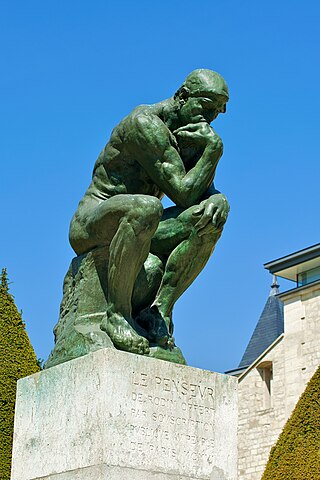
For centuries, Paris has attracted artists from around the world, arriving in the city to educate themselves and to seek inspiration from its artistic resources and galleries. As a result, Paris has received a reputation as the "City of Art". Home to some of the world's most famous museums and galleries, including the Louvre and the Musée d'Orsay, the city today remains home to a thriving community of artists. Paris is recognized globally for its public landmarks and masterpieces of architecture including the Arc de Triomphe and a symbol of France, the Eiffel Tower.
Jean-Baptiste David was a French painter and lithographer. His illustrations appeared in many books and magazines. He was particularly known for his illustrations of contemporary Parisian fashions.
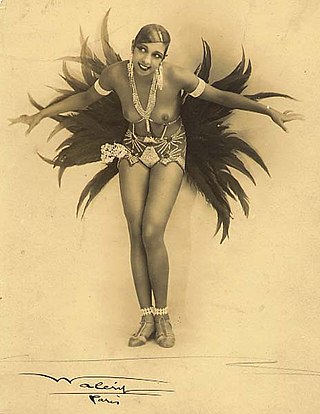
The Années folles was the decade of the 1920s in France. It was coined to describe the social, artistic, and cultural collaborations of the period. The same period is also referred to as the Roaring Twenties or the Jazz Age in the United States. In Germany, it is sometimes referred to as the Golden Twenties because of the economic boom that followed World War I.
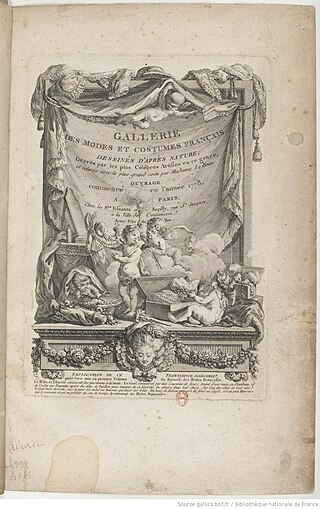
Galerie des Modes et Costumes Français is a series of fashion and costume plates that was distributed in Paris from 1778 to 1787, during the reign of King Louis XVI of France and Marie Antoinette. The first collected volume, which was produced in 1779, had a title page which bore an allegorical illustration as well as the full title of the collection: Gallerie des modes et des costumes français dessinés d'après nature, Gravés par le plus Célèbres Artistes en ce genre, et colorés avec le plus grand soin par Madame Le Beau. Ouvrage commence en l'année 1778. A Paris, chez le Srs Esnauts et Rapilly rue St. Jacques à la Ville de coutances. Avec priv. Du Roi. Importantly, this lengthier epithet indicates that the engravings of the Galerie were created "d'après nature," or "after nature," meaning that they were intended to represent what was actually worn in the streets of Paris during the latter part of the eighteenth century.

Anaïs Toudouze was a French fashion plate illustrator, born in Ukraine. She was born to a painter and lithographer, Alexandre-Marie Colin and his wife, who was also a painter.
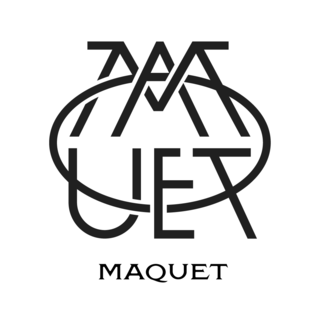
Maquet is a French manufacturer of luxury stationery, leather goods, and art prints, established in Paris, in 1841 by the Maquet brothers, Hector and Charles. One of the most renowned Parisian luxury houses, Maison Maquet became official purveyor to Empress Eugénie as well as to several royal courts, winning multiple awards and medals at various World's fairs over the course of its history.

Journal des dames et des modes, was a French fashion magazine, published between 1797 and 1839. Until the 1820s, the magazine had almost international monopoly as a channel of French fashion worldwide.

The Séeberger family, known as the Frères Séeberger; three brothers Jules (1872–1932), Henri (1876–1956) and Louis' (1874-1946), sons Jean (1910–1979) and Albert (1914–1999) were a French fashion photography family active during the 20th century.

Cabinet des Modes, with the title La Magasin des Modes Nouvelles Francaises et Anglaises in 1786–1789, and Le Journal de la Modet et du Gout in 1790–1793, was a French fashion magazine, published between 1785 and 1793. It is recognized to be the first fashion magazine.
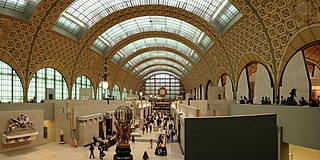
The 136 museums in the city of Paris display many historical, scientific, and archeological artifacts from around the world, covering diverse and unique topics including fashion, theater, sports, cosmetics, and the culinary arts.
La Mode Illustrée, was a French fashion magazine, published between 1860 and 1937. Its subtitle was Journal de la famille. The magazine was founded by Emmeline Raymond, headquartered in Paris and published by the Didot brothers. It was known for its high quality illustrations by Adele-Anaïs Colin Toudouze and Héloïse Leloir.














